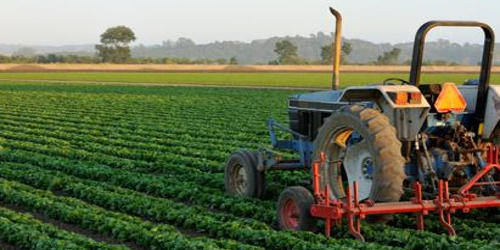Willows, also known as sallows and osiers, are a genus of trees in the Salicaceae family that are primarily native to northern temperate regions and are prized for their ornament, shade, erosion control, and wood. Willows are found in about 400 different species all over the world. They live predominantly on wet soils in the Northern Hemisphere’s cold and temperate areas. Willow is the common name for most species, although certain narrow-leaved shrubs are named osier, while other broader-leaved species are called sallow (from Old English sealh, related to the Latin word salix, willow).
The willow tree is a tall deciduous tree that grows 30 to 80 feet tall with a beautiful arching limb spread of 20 to 35 feet. Smaller branches, like reeds, are elastic and flexible, allowing light winds to move the entire tree. The leaves are thin and oval in form. The weeping willow (Salix babylonica) has the most dramatic weeping shape of all the willows, with its downward arching appearance. Other willows, such as Salix alba ‘Tristis’ and Salix pendulina ‘Elegantissima,’ can also have this pendulous character.
Some willows (especially those native to the arctic and alpine regions) are low-growing or creeping shrubs; for example, the dwarf willow (Salix herbacea) grows to just 6 cm (2+1/2 in) in height yet spreads widely across the ground. Salicin is produced from willows and is a source of salicylic acid, which is utilized in pain medications. All species have alternate, generally thin leaves and catkins on different trees, with long, silky hairs on the seeds.
Some willows (especially those native to the arctic and alpine regions) are low-growing or creeping shrubs; for example, the dwarf willow (Salix herbacea) grows to only 6 centimeters (2.4 inches) in height yet spreads extensively. It is one of the world’s tiniest woody plants. Black (S. nigra), crack (S. fragilis), and white (S. alba) are the three biggest willows, each reaching a height of 20 meters (65 ft). The white willow is the biggest willow tree species, reaching a height of 30 meters (100 feet).

The majority of willows have a limited lifespan. A willow that is 70 years old is a very ancient tree. Few people survive to be 100 years old. Willows feature big, fibrous, and frequently stoloniferous roots, as well as copious watery bark sap that is highly charged with salicylic acid, soft, typically pliant, stiff wood, thin branches, and huge, fibrous, and often stoloniferous roots. The roots are notable for their hardness, size, and desire to live, and they grow quickly from the plant’s aerial portions.
Poplar trees, which are also members of the Salicaceae family, have been dubbed “the great healers of the land that lies bleeding and torn, scoured or burned.” Poplars are one of the first species to come into a disturbed or damaged habitat as healers. They help to maintain ecosystems that will eventually give way to slower-growing, longer-lived trees. The leaves are usually elongated, although they can also be circular or oval in shape, and they often have serrated edges.
Semievergreen willows with coriaceous leaves, such as Salix micans and S. australior in the eastern Mediterranean, are uncommon. The bark is scaly and grey, brown, or black in color. Eastern Cottonwood, a Poplar species, is the fastest-growing natural plant in America, reaching five feet in one season in ideal conditions. Willow leaves are typically 5 to 15 centimeters (2 to 6 inches) long, deciduous, alternating, and elongated, serrated, or smooth in appearance.
Willow trees are linked to superstition and mysticism. The willow tree’s branches were used by witches to make brooms, according to folklore. Willows are one of the first woody plants to leaf out in the spring and one of the last to shed their leaves in the fall. Depending on the environment, leaf out can start as early as February and is triggered by air temperature. A willow will try to put forth leaves and blooms if daytime highs surpass 10 °C (50 °F) for a few days in a row.
Male and female blooms have quite distinct appearances, and it would be easy to mistake a male and female willow tree for two different species if they were compared side by side. When the day duration shortens to roughly 10 hours and 25 minutes, which varies by latitude, leaf drop occurs (as early as the first week of October for boreal species such as S. alaxensis and as late as the third week of December for willows growing in far southern areas).
Willow trees feature elongated leaves with a green top surface and a white below the surface. The fruit is a little capsule with many tiny (0.1 mm) seeds encased in white down, which helps the seeds disperse by the wind. Seeds must land in a wet environment and germinate rapidly, otherwise, they will dry out and perish shortly. Willows may grow in a variety of soils, from coarse sand to fine silt loams. PH ranges from 6.5 to 7.5. They can withstand compaction, although they are susceptible to pollutants.
Willow trees have the ability to reproduce without the need of fertilizer. When fallen branches establish roots near water sources, they are able to produce genetic duplicates of the parent plant. It is one among the world’s fastest-growing plants. Each year, it can reach a height of ten feet. Willow is commonly planted in flooded regions or places that need to be drained because of its capacity to absorb huge amounts of water. Strong, deep, and broad roots also keep the soil from eroding.
Willows are utilized by the larvae of several Lepidoptera species, such as the mourning cloak butterfly, as a source of food. Wood ants, as well as wasps, are prevalent on aphid-infested willows, where they come to gather aphid honeydew. Willow trees are very good at vegetative reproduction, sprouting from branches even upside-down. Willow has a lot of uses in medicine. Salicin, a compound extracted from the bark, is used to make aspirin, a very popular and extensively used medicine. This is only one of the many health-promoting chemicals found in willow.
In the past, people chewed the bark of the willow tree to alleviate fever, inflammation, and discomfort. Willows are widely farmed and utilized in landscaping and hedges all over the world. Baskets, fishing nets, furniture, and toys are all made from the willow tree. Baskets, fish traps, wattle fences, and wattle and daub house walls were all often made from osiers or withies (rod-like willow shoots, often grown in coppices). Willow roots spread widely and are aggressive in their search for moisture; as a result, they can be a problem in residential areas, where the roots are notorious for clogging French drains, drainage systems, weeping tiles, septic systems, storm drains, and sewer systems, especially older tile, concrete, or ceramic pipes.
















